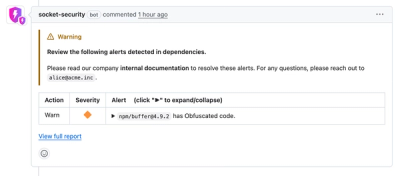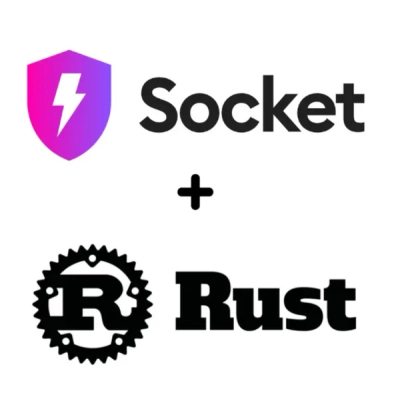
Security News
Crates.io Users Targeted by Phishing Emails
The Rust Security Response WG is warning of phishing emails from rustfoundation.dev targeting crates.io users.
event-sidecar
Advanced tools
Swagger api src/interface/swagger.json
We use npm-audit-resolver along with npm audit to check dependencies for node vulnerabilities, and keep track of resolved dependencies with an audit-resolve.json file.
To start a new resolution process, run:
npm run audit:resolve
You can then check to see if the CI will pass based on the current dependencies with:
npm run audit:check
And commit the changed audit-resolve.json to ensure that CircleCI will build correctly.
As part of our CI/CD process, we use anchore-cli to scan our built docker container for vulnerabilities upon release.
If you find your release builds are failing, refer to the container scanning in our shared Mojaloop CI config repo. There is a good chance you simply need to update the mojaloop-policy-generator.js file and re-run the circleci workflow.
For more information on anchore and anchore-cli, refer to:
As part of our CI/CD process, we use a combination of CircleCI, standard-version npm package and github-release CircleCI orb to automatically trigger our releases and image builds. This process essentially mimics a manual tag and release.
On a merge to main, CircleCI is configured to use the mojaloopci github account to push the latest generated CHANGELOG and package version number.
Once those changes are pushed, CircleCI will pull the updated main, tag and push a release triggering another subsequent build that also publishes a docker image.
There is a case where the merge to main workflow will resolve successfully, triggering a release. Then that tagged release workflow subsequently failing due to the image scan, audit check, vulnerability check or other "live" checks.
This will leave main without an associated published build. Fixes that require a new merge will essentially cause a skip in version number or require a clean up of the main branch to the commit before the CHANGELOG and bump.
This may be resolved by relying solely on the previous checks of the merge to main workflow to assume that our tagged release is of sound quality. We are still mulling over this solution since catching bugs/vulnerabilities/etc earlier is a boon.
It is unknown if a race condition might occur with multiple merges with main in quick succession, but this is a suspected edge case.
FAQs
Event Sidecar is used to route an event to Kafka
We found that event-sidecar demonstrated a healthy version release cadence and project activity because the last version was released less than a year ago. It has 1 open source maintainer collaborating on the project.
Did you know?

Socket for GitHub automatically highlights issues in each pull request and monitors the health of all your open source dependencies. Discover the contents of your packages and block harmful activity before you install or update your dependencies.

Security News
The Rust Security Response WG is warning of phishing emails from rustfoundation.dev targeting crates.io users.

Product
Socket now lets you customize pull request alert headers, helping security teams share clear guidance right in PRs to speed reviews and reduce back-and-forth.

Product
Socket's Rust support is moving to Beta: all users can scan Cargo projects and generate SBOMs, including Cargo.toml-only crates, with Rust-aware supply chain checks.